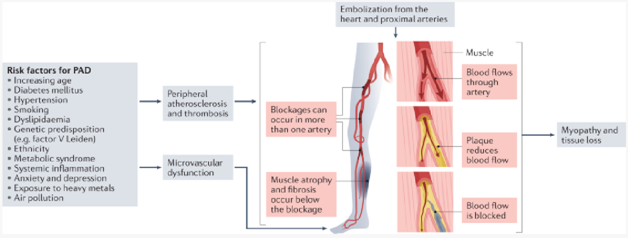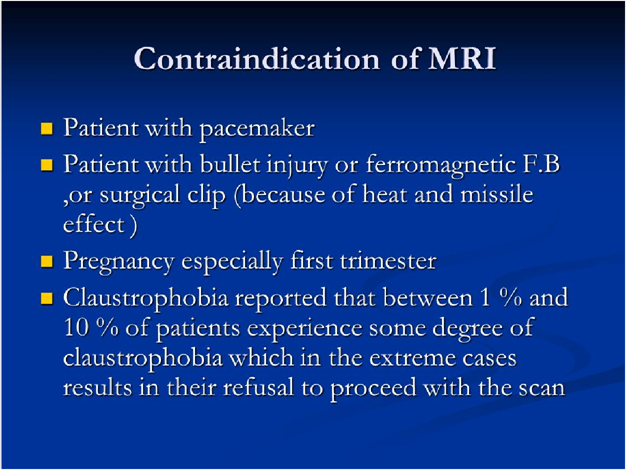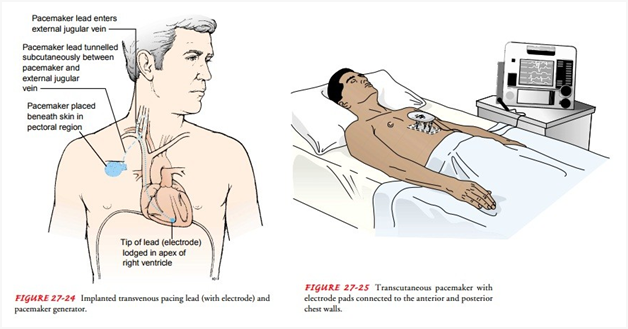The nurse has written a plan of care for a client diagnosed with peripheral arterial insufficiency. Which intervention is the most appropriate for this diagnosis?
Elevate the legs and arms above the heart when resting.
Encourage the client to engage in a moderate amount of exercise.
Encourage extended periods of sitting or standing.
Discourage walking in order to limit pain.
The Correct Answer is B
The most appropriate intervention for a client diagnosed with peripheral arterial insufficiency is: Encourage the client to engage in a moderate amount of exercise. Peripheral arterial insufficiency is a condition characterized by reduced blood flow to the extremities, typically the legs, due to narrowed or blocked arteries. Regular exercise is an important component of managing peripheral arterial insufficiency. Exercise helps improve circulation, promote collateral blood vessel development, and increase the distance a client can walk before experiencing pain (intermittent claudication). Therefore, encouraging the client to engage in a moderate amount of exercise, such as walking, under healthcare provider guidance is crucial.]

The other options are not appropriate interventions for peripheral arterial insufficiency:
Elevating the legs and arms above the heart when resting: While elevation can be beneficial for certain conditions, such as reducing swelling in venous insufficiency, it is not the primary intervention for peripheral arterial insufficiency. Elevation alone does not improve arterial blood flow and may not effectively address the underlying circulatory issues.
Encouraging extended periods of sitting or standing: Prolonged sitting or standing can further restrict blood flow and exacerbate symptoms in clients with peripheral arterial insufficiency. Encouraging regular movement and avoiding prolonged immobility is important to maintain adequate circulation.
Discouraging walking in order to limit pain: While walking may cause pain or discomfort in clients with peripheral arterial insufficiency (intermittent claudication), it is important to encourage walking as part of an exercise regimen. Walking helps improve symptoms over time and promotes overall cardiovascular health.
Nursing Test Bank
Naxlex Comprehensive Predictor Exams
Related Questions
Correct Answer is A
Explanation
Having a permanent cardiac pacemaker is a significant factor that needs to be communicated to the health care provider before undergoing an MRI. Magnetic resonance imaging (MRI) uses powerful magnets, radio waves, and a computer to create detailed images of the body. The presence of a cardiac pacemaker can be a contraindication for undergoing an MRI because the strong magnetic field can potentially interfere with the functioning of the pacemaker or cause it to malfunction. It is crucial to assess the compatibility of the pacemaker with the MRI machine and to take appropriate precautions or make necessary arrangements to ensure the safety of the client during the procedure.

While the other pieces of information provided may be relevant to the client's overall health and medical history, they may not have a direct impact on the safety or feasibility of undergoing an MRI.
Correct Answer is D
Explanation
Sinus bradycardia with a heart rate of 32 beats/min and accompanying hypotension and symptoms of feeling faint indicates significant hemodynamic compromise. In such cases, the first-line intervention is to provide external cardiac pacing through transcutaneous pacemaker (TCP) pads. TCP can help increase the heart rate and improve cardiac output by delivering electrical impulses to the heart.
Administering the scheduled dose of diltiazem (Cardizem), a calcium channel blocker, is not appropriate in this situation. Diltiazem can further lower the heart rate and blood pressure, exacerbating the client's symptoms and potentially leading to adverse effects.
Repositioning the patient on the left side or having the patient perform the Valsalva maneuver are not effective interventions for treating sinus bradycardia with hemodynamic compromise. These actions may be used in specific situations, but in this case, the client requires immediate intervention to address the low heart rate and blood pressure.

Whether you are a student looking to ace your exams or a practicing nurse seeking to enhance your expertise , our nursing education contents will empower you with the confidence and competence to make a difference in the lives of patients and become a respected leader in the healthcare field.
Visit Naxlex, invest in your future and unlock endless possibilities with our unparalleled nursing education contents today
Report Wrong Answer on the Current Question
Do you disagree with the answer? If yes, what is your expected answer? Explain.
Kindly be descriptive with the issue you are facing.
